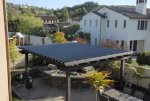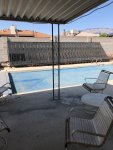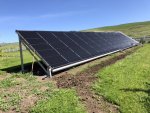Hey guys, assuming I have the pumping capacity, is it highly impractical to place a ground mounted solar pool panel array roughly 300ft from the pool? While the pannels would be in full sun all day, the piping going back to the pool would be in the shade.
I would be able to put it closer to the pool but if that were the case I'd like to hide it on top of a structure. Is it bad to lay these panels flat on top of a pergola (like in the attached picture) if they are to be located up here in snow country? I'm not sure if the weight of the snow and ice would tear the pannels where there is no support beneath. Thanks.
I would be able to put it closer to the pool but if that were the case I'd like to hide it on top of a structure. Is it bad to lay these panels flat on top of a pergola (like in the attached picture) if they are to be located up here in snow country? I'm not sure if the weight of the snow and ice would tear the pannels where there is no support beneath. Thanks.
Attachments
Last edited:




